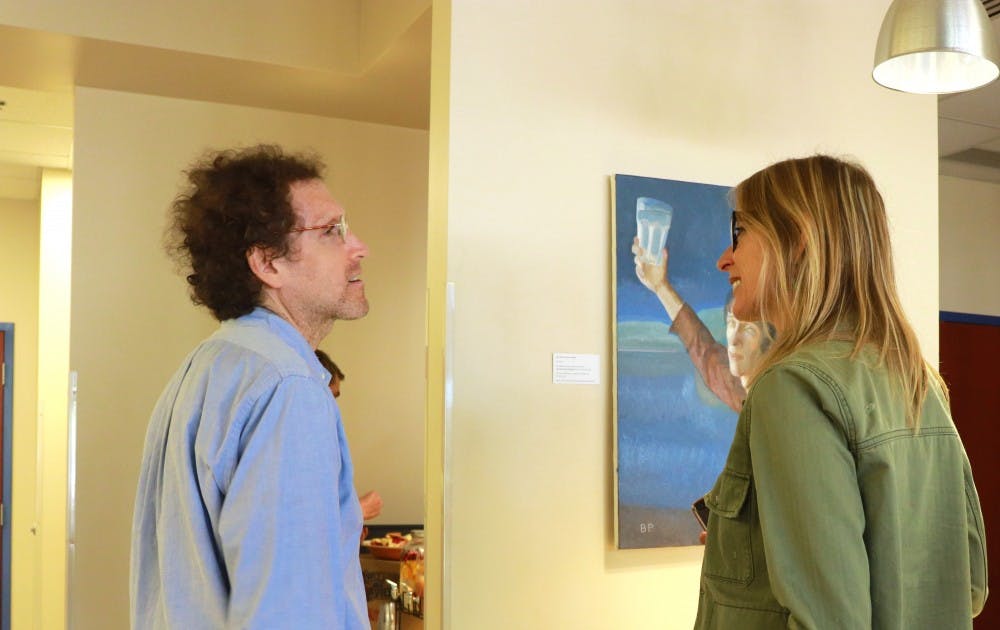The City of Bloomington Utilities unveiled a series of water-themed paintings Monday to showcase Bloomington’s history of struggle with water sources.
Local artist Ben Pines presented three paintings at Monday’s reception at the CBU Service Center. The paintings celebrate Bloomington and Monroe County’s milestones in establishing water sources and advancing water treatment technology.
Bloomington has struggled for years to create reliable water sources. The natural landscape of the area does not hold water well, and has no natural lakes, making Bloomington very poor in water. Beginning in the late 1800s, city officials began attempting to build lakes to solve the problem.
“For a time, water was brought to IU on rail cars,” said Todd Royer, IU professor at the School of Public and Environmental Affairs. “The City of Bloomington made numerous attempts to construct water supply reservoirs south and west of the city, but all failed to hold water.”
Bloomington had no success until it built Lake Monroe and a treatment plant in 1965.
“We didn’t used to have a reliable long-term water source until this,” Vic Nelson, director of CBU, said.
After years battling Bloomington’s landscape, the city and its officials want to celebrate their success — an effort which included a 50th anniversary celebration last year for the Monroe treatment plant.
The CBU, which oversees all operations of the utilities department for the city, began commissioning artwork for its lobby several years ago. Employees enjoyed it so much that officials put together a program to invite artists to create paintings for the building, Nelson said. They began looking for artists for new paintings for the lobby in April.
“I thought it was a pretty exciting opportunity,” Pines said. The timeline was short, as the paintings were due in May.
Pines’ artwork consists of three portraits of people working in a lab that opens to a large view of the sky.
“I wanted people to feel like they’re both indoors and outdoors at the same time,” Pines said. “The freedom of being outdoors was a feeling that was part of the architecture at the time of the treatment plant.”
Before starting the paintings, Pines toured the facility at Lake Monroe, which inspired him to include aspects of the architecture there.
“I got excited about making it more contemporary,” Pines said. “I like portraits, and I thought that could be a way to start.”
Pines said he combined these ideas with some research and was eager to send a message to the public. He said he was interested and concerned with communication and perceptions of public institutions.
“This is important because water is critical for life, and we’re very fortunate,” Nelson said. “For about 200 years, citizens have been dealing with the natural water-poor landscape that we live in, and members of the public have taken action.”
The reception was open to the public, and citizens can still stop by to view the paintings in the lobby.
“We want the public to remember and pay attention to and honor the people who are out there every day making sure that your water is clean and safe to drink,” Nelson said.




